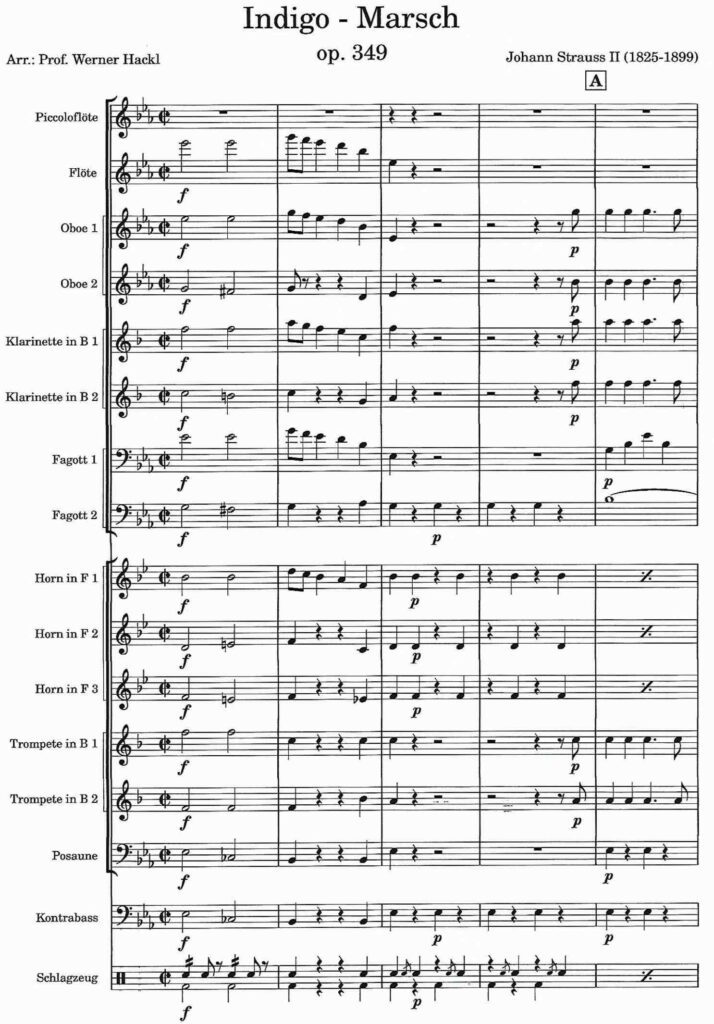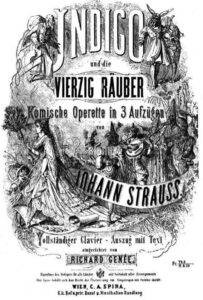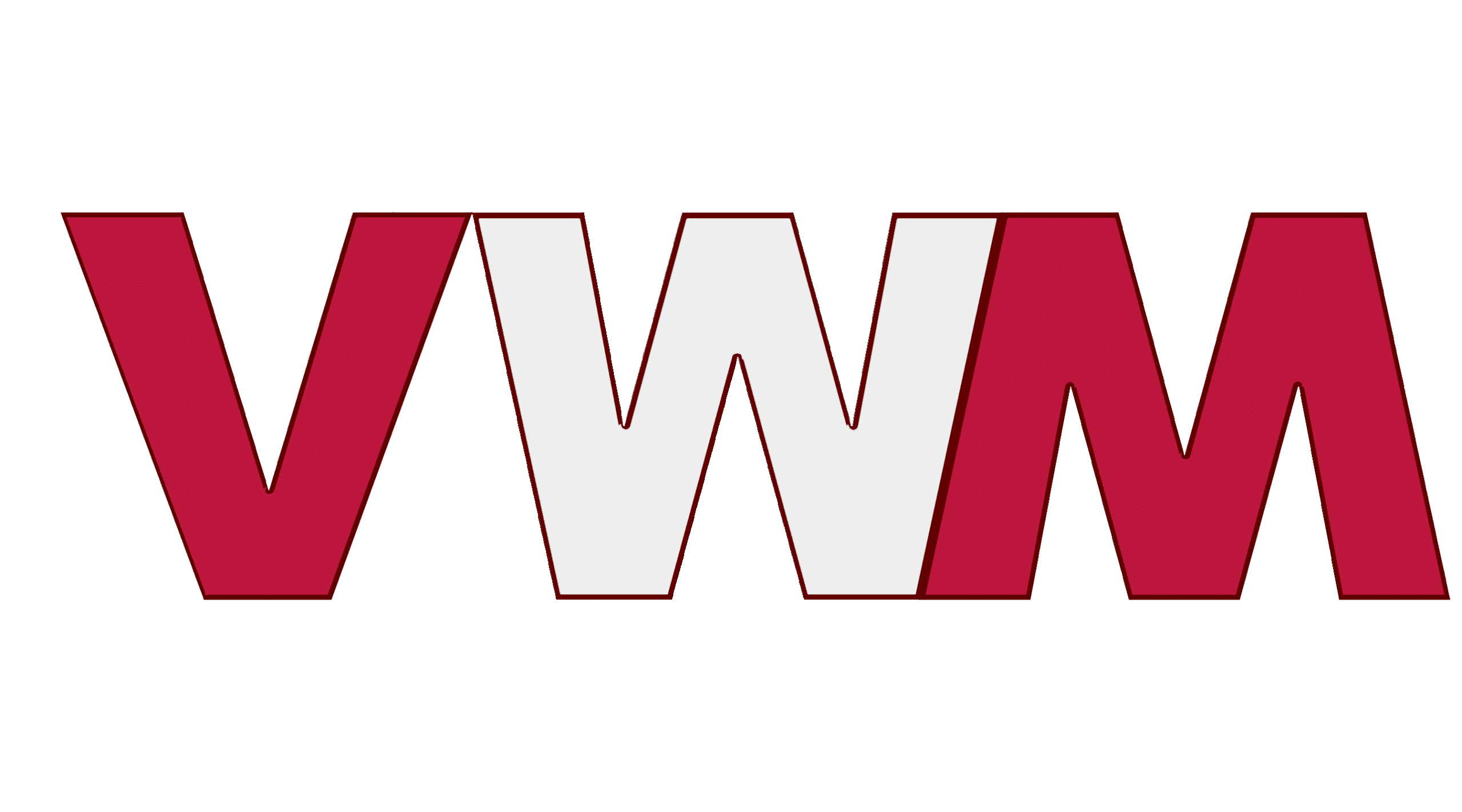Johann Strauss II (1825-1899) Indigo-Marsch, op.349

Der schwungvolle Indigo-Marsch stammt aus dem reichen Melodienvorrat, den Johann Strauss in seinem ersten Bühnenwerk (Indigo und die 40 Räuber) verwendete. Johann Strauss trachtete, möglichst viele Melodien aus der Operettenpartitur auch in Form der gewohnten, von ihm erwarteten Tanzmusik dem Publikum zur Verfügung zu stellen. An dieser Praxis hielt er sein ganzes Leben lang fest. Die Uraufführung des Indigo-Marsches überließ Johann Strauss seinem Bruder Eduard, der das Werk am 9. April 1871 bei seinem Sonntagskonzert im Goldenen Saal des Musikvereins den Zuhörern vorführte und es sogleich wiederholen musste. Auch ohne den, im Original verwendeten Streichern, klingt der Marsch schmissig und bereichert dankbar des Repertoires eines Bläserorchesters.

The lively Indigo March comes from the rich stock of melodies that Johann Strauss used in his first stage work (Indigo and the 40 Robbers). Johann Strauss tried to make as many melodies from the operetta score available to the audience as possible in the form of the usual dance music that were expected of him. He stucks to this practice throughout his life. Johann Strauss left the premiere of the Indigo March to his brother Eduard, who performed the work to the listeners on April 9, 1871 at his Sunday concert in the Golden Hall of the Musikverein and immediately had to repeat it. Even without the strings used in the original, the march sounds snappy and enriches the repertoire of a wind orchestra.
| sound sample / Tonbeispiel | score/parts PDF download: € 38,- | add to cart / in den Warenkorb |
